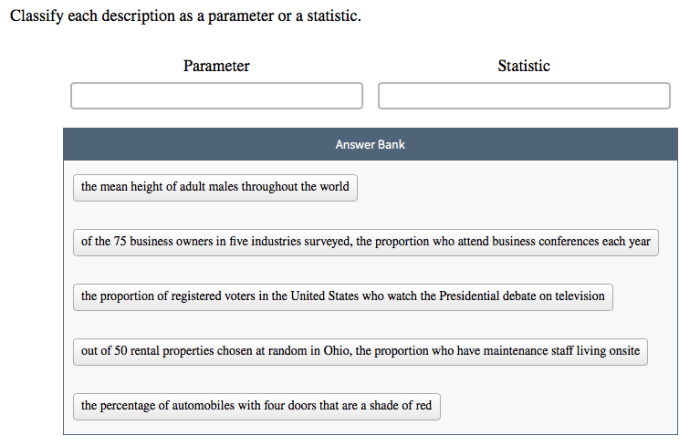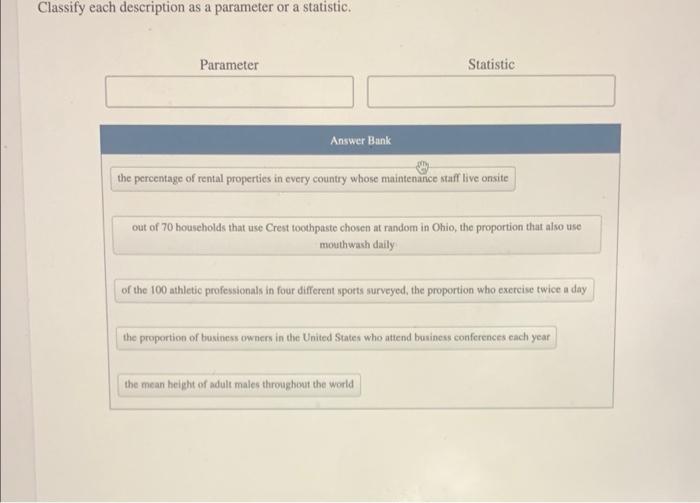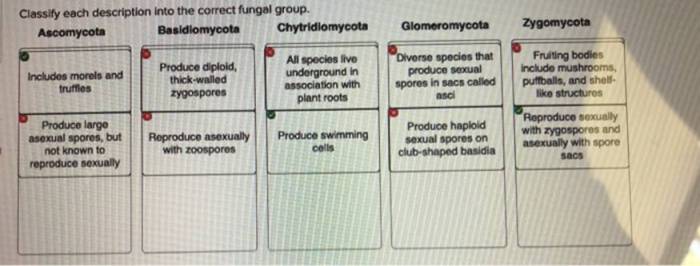Classify each description as a parameter or a statistic – In the realm of statistics, understanding the distinction between parameters and statistics is paramount. This guide delves into the key differences between these two concepts, providing practical examples and outlining methods for their classification. By grasping this distinction, researchers and practitioners can enhance their data analysis and interpretation, leading to more informed decision-making.
This guide will explore the criteria for classifying descriptions as parameters or statistics, discussing common methods used to make this distinction. It will also provide examples and non-examples to solidify understanding. Furthermore, the application of this distinction in various fields, such as research, engineering, and finance, will be examined, highlighting the implications of misclassification.
Definition of Parameters and Statistics

In statistics, parameters and statistics are two fundamental concepts that describe the characteristics of a population and a sample, respectively. A parameter is a numerical value that describes a property of the entire population, while a statistic is a numerical value that describes a property of a sample drawn from the population.
Methods for Classifying Descriptions

There are several criteria that can be used to classify descriptions as parameters or statistics. One common criterion is the source of the data. Parameters are derived from the population, while statistics are derived from a sample. Another criterion is the level of certainty.
Parameters are known with certainty, while statistics are estimates that are subject to sampling error.
Examples and Non-Examples, Classify each description as a parameter or a statistic
| Parameters | Statistics |
|---|---|
| Population mean | Sample mean |
| Population proportion | Sample proportion |
| Population variance | Sample variance |
Application in Different Fields

The distinction between parameters and statistics is applied in a wide range of fields, including research, engineering, and finance. In research, parameters are used to describe the characteristics of the population being studied, while statistics are used to describe the characteristics of the sample being used to make inferences about the population.
In engineering, parameters are used to design systems and products, while statistics are used to evaluate the performance of those systems and products. In finance, parameters are used to model financial markets, while statistics are used to make investment decisions.
Commonly Asked Questions: Classify Each Description As A Parameter Or A Statistic
What is the primary difference between a parameter and a statistic?
A parameter is a numerical characteristic of a population, while a statistic is a numerical characteristic of a sample.
How can I determine if a description is a parameter or a statistic?
Consider the source of the data: if it comes from a population, it is likely a parameter; if it comes from a sample, it is likely a statistic.
What are some examples of parameters?
Population mean, population standard deviation, and population proportion are examples of parameters.
What are some examples of statistics?
Sample mean, sample standard deviation, and sample proportion are examples of statistics.